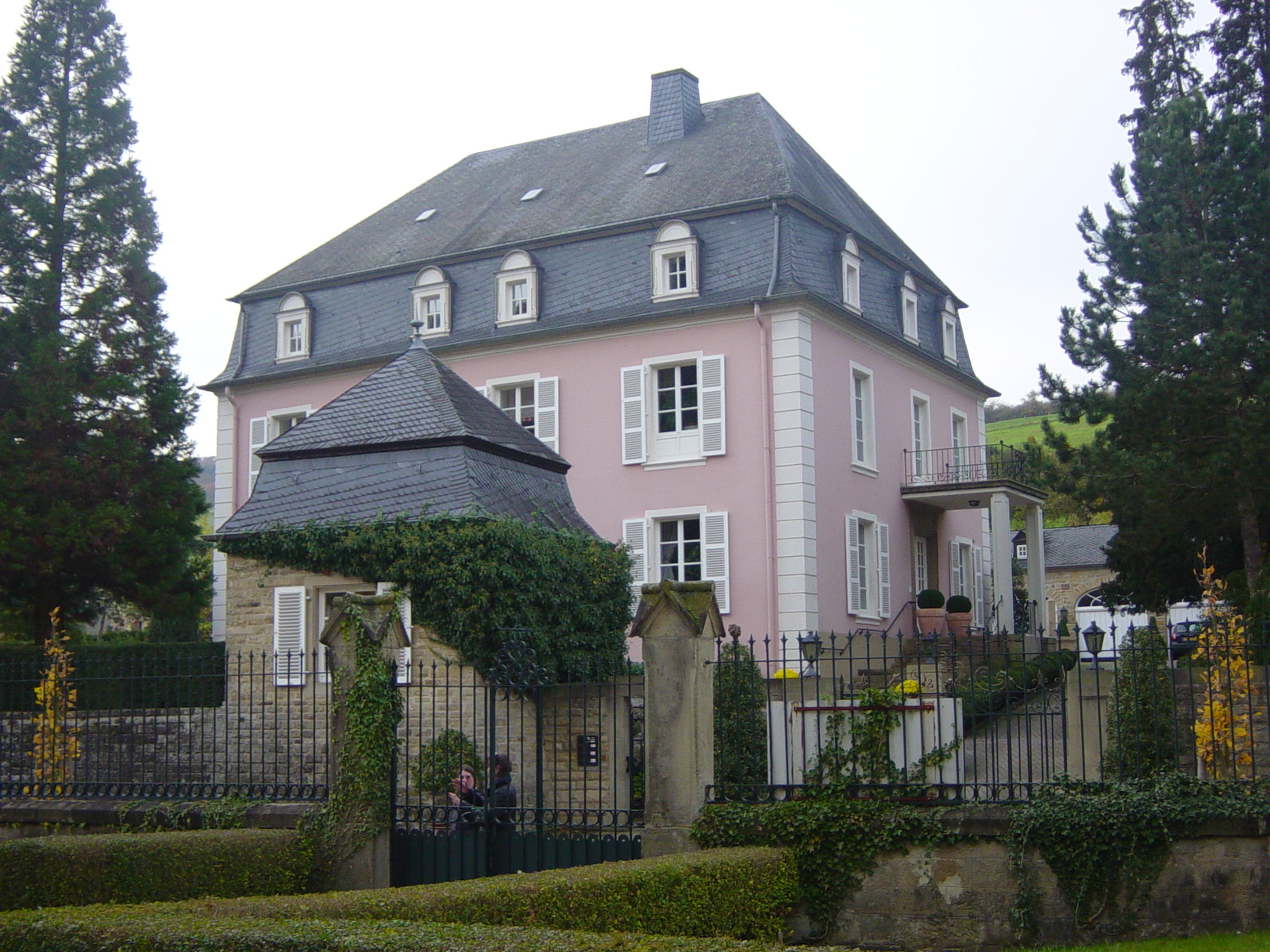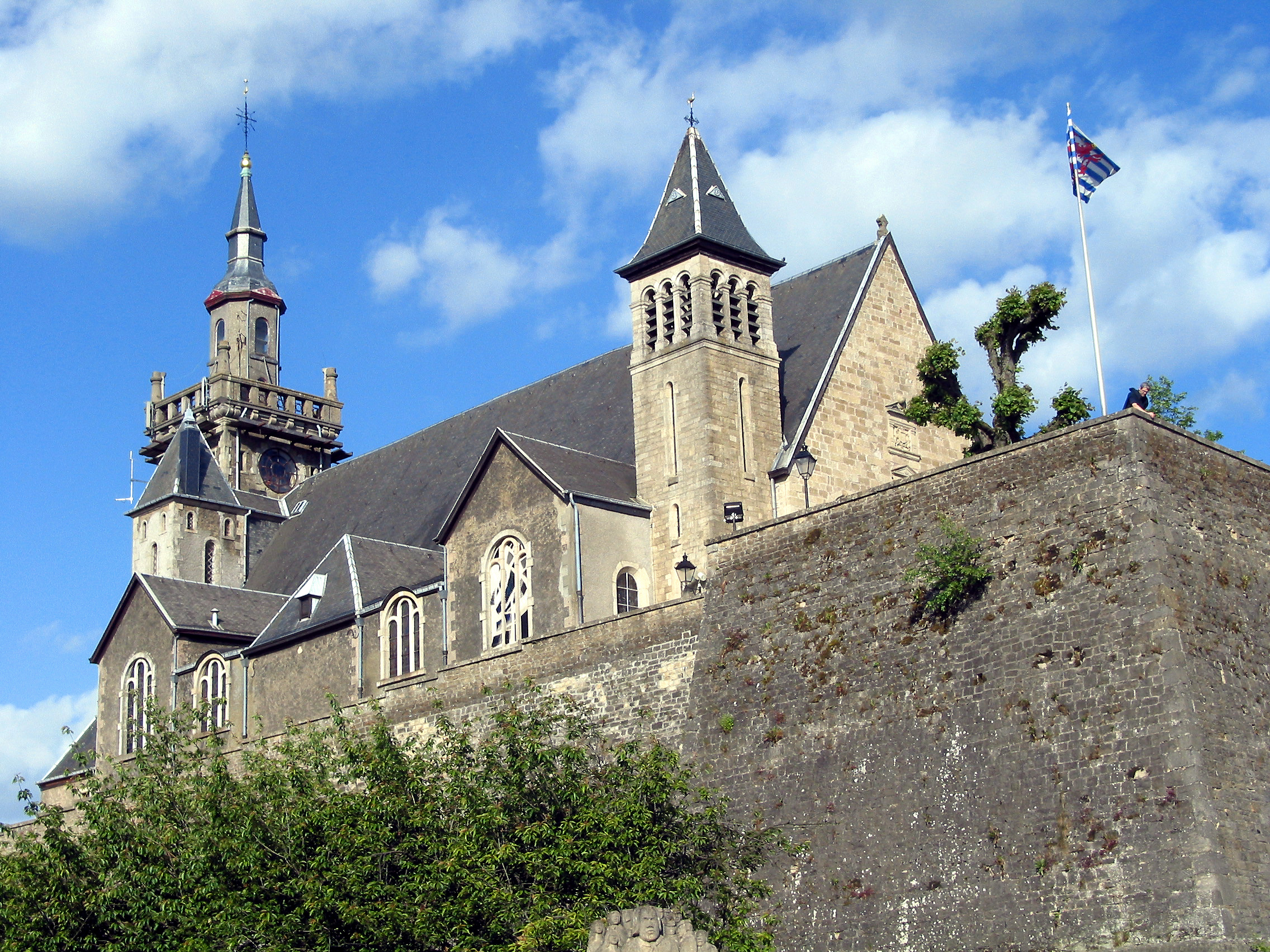|
Born, Luxembourg
Born ( lb, Bur meaning ''spring'' or ''fountain'', French: ''Born-sur-Sûre'', German: ''Born an der Sauer'') is a village on the River Sauer in the commune of Mompach, in eastern Luxembourg. It lies on the N10, south of Echternach and north of Wasserbillig. Only 5 minutes drive from the E44 motorway from Luxembourg City to Trier, it is popular with tourists and day-trippers who walk, cycle or fish along the banks of the river. , Born has a population of 340. History Around 54 BC, the Romans overcame the Treveri, a Gallic tribe who had lived in the area for several hundred years. The Romans became firmly established in nearby Trier or ''Augusta Treverorum'', a prosperous regional capital, but they also developed communities in the Moselle and Sauer valleys, especially at Wasserbillig (''Biliacum''), the bridge over the Sauer on the Roman road from Trier to Reims (''Civitas Remorum''), and Echternach, the bridge on the road from Arlon (''Orolaunum''), to Bitburg (''Vicus Beda'' ... [...More Info...] [...Related Items...] OR: [Wikipedia] [Google] [Baidu] |
Moselle
The Moselle ( , ; german: Mosel ; lb, Musel ) is a river that rises in the Vosges mountains and flows through north-eastern France and Luxembourg to western Germany. It is a bank (geography), left bank tributary of the Rhine, which it joins at Koblenz. A small part of Belgium is in its drainage basin, basin as it includes the Sauer and the Our River, Our. Its lower course "twists and turns its way between Trier and Koblenz along one of Germany's most beautiful river valleys."''Moselle: Holidays in one of Germany's most beautiful river valleys'' at www.romantic-germany.info. Retrieved 23 Jan 2016. In this section the land to the north is the Eifel which stretches into Belgium; to the south lies the Hunsrück. The river flows through a region that was cultivated by the Ro ... [...More Info...] [...Related Items...] OR: [Wikipedia] [Google] [Baidu] |
Moersdorf
Moersdorf () is a small town in the commune of Mompach, in eastern Luxembourg Luxembourg ( ; lb, Lëtzebuerg ; french: link=no, Luxembourg; german: link=no, Luxemburg), officially the Grand Duchy of Luxembourg, ; french: link=no, Grand-Duché de Luxembourg ; german: link=no, Großherzogtum Luxemburg is a small land .... , the town has a population of 293. It is often called the “little Switzerland of Luxembourg” by residents and tourists alike. Mompach Towns in Luxembourg {{Echternach-geo-stub ... [...More Info...] [...Related Items...] OR: [Wikipedia] [Google] [Baidu] |
Rhineland-Palatinate
Rhineland-Palatinate ( , ; german: link=no, Rheinland-Pfalz ; lb, Rheinland-Pfalz ; pfl, Rhoilond-Palz) is a western state of Germany. It covers and has about 4.05 million residents. It is the ninth largest and sixth most populous of the sixteen states. Mainz is the capital and largest city. Other cities are Ludwigshafen am Rhein, Koblenz, Trier, Kaiserslautern, Worms and Neuwied. It is bordered by North Rhine-Westphalia, Saarland, Baden-Württemberg and Hesse and by the countries France, Luxembourg and Belgium. Rhineland-Palatinate was established in 1946 after World War II, from parts of the former states of Prussia (part of its Rhineland and Nassau provinces), Hesse ( Rhenish Hesse) and Bavaria (its former outlying Palatinate kreis or district), by the French military administration in Allied-occupied Germany. Rhineland-Palatinate became part of the Federal Republic of Germany in 1949 and shared the country's only border with the Saar Protectorate until the latt ... [...More Info...] [...Related Items...] OR: [Wikipedia] [Google] [Baidu] |
Rosport
Rosport () is the capital of the commune of Rosport-Mompach in eastern Luxembourg. It is part of the canton of Echternach, which is part of the district of Grevenmacher. Until 31 December 2017, it was a commune. On 1 January 2018, the commune was merged with Mompach to form the new commune of Rosport-Mompach. Rosport Castle, built in 1892, was the home of the Luxembourg inventor Henri Tudor. Since May 2009, the castle has been home to the Tudor Museum where there is an exhibition based on his development of the lead–acid battery."Historique du musée" , ''Musée Tudor''. . Retrieved 30 March 2011. Former commune The former commune consisted of the villages: * |
Born Castle
Born Castle (Luxembourgish: ''Schlass Bur''; french: Château de Born; German: ''Schloss Born'') is located in the centre of the little village of Born some 8 km (5 mi) north of Wasserbillig in south-eastern Luxembourg. It has a history dating from 1286 when the Lords of Born lived there. In particular, they were associated with the families of Hattstein, Faust d'Aschaffenbourg and de Villers. Today's castle was built on the old site in the 18th century and is privately owned.Jean-Claude Muller, "Les seigneurs de Born-sur-Sûre, notamment les familles de Hattstein, Faust d'Aschaffenbourg et de Villiers", 1999. See also *List of castles in Luxembourg By some optimistic estimates, there are as many as 130 castles in Luxembourg but more realistically there are probably just over a hundred, although many of these could be considered large residences or manor houses rather than castles.Evy Friedri ... References Castles in Luxembourg Mompach {{Luxembourg-struct-stub ... [...More Info...] [...Related Items...] OR: [Wikipedia] [Google] [Baidu] |
Abbey Of Echternach
The Abbey of Echternach is a Benedictine monastery in the town of Echternach, in eastern Luxembourg. The Abbey was founded in the 7th century by St Willibrord, the patron saint of Luxembourg. For three hundred years, it benefited from the patronage of a succession of rulers, and was the most powerful institution in Luxembourg. The abbey is currently a popular tourist attraction mostly on account of an annual Dancing procession of Echternach, dancing procession that is held every Whit Tuesday. Tens of thousands of tourists, day-trippers, pilgrims, and clergy visit Echternach to witness or participate in the traditional ceremony. History Willibrord Located by the Sauer, River Sauer, Echternach had originally been the site of a 1st-century Roman Empire, Roman villa. By the 6th century, the estate had been passed to the see of Trier, who constructed a small monastery on the estate. In 698, Irmina of Oeren granted the Northumbrian missionary Willibrord, Archdiocese of Utrecht ( ... [...More Info...] [...Related Items...] OR: [Wikipedia] [Google] [Baidu] |
Bitburg
Bitburg (; french: Bitbourg; lb, Béibreg) is a city in Germany, in the state of Rhineland-Palatinate approximately 25 km (16 mi.) northwest of Trier and 50 km (31 mi.) northeast of Luxembourg city. The American Spangdahlem Air Base is nearby. History The city's name derives from its Celtic toponym, ''Beda''. Bitburg originated approximately 2,000 years ago as a stopover for traffic from Lyon through Metz and Trier to Cologne. The first name mentioned was ''Vicus Beda''. Emperor Constantine the Great expanded the settlement to a road castle around 330, the central part of which forms the town centre today. Bitburg is first documented only after the end of the Roman Empire around 715 as ''castrum bedense''. It subsequently became part of Franconia. The first mention of Bitburg in historic annals occurred in connection with the signing in 1239 of the Trier-Luxembourg Treaty between Archbishop Theoderich II of Trier and Countess Ermesinde II of Luxemburg, u ... [...More Info...] [...Related Items...] OR: [Wikipedia] [Google] [Baidu] |
Arlon
Arlon (; lb, Arel ; nl, Aarlen ; german: Arel ; wa, Årlon; la, Orolaunum) is a city and municipality of Wallonia located in and capital of the province of Luxembourg in the Ardennes, Belgium. With a population of just over 28,000, it is the smallest provincial capital in Belgium. Arlon is also the capital of its cultural region: the Arelerland (Land of Arlon in Luxemburgish). The municipality consists of the following districts: Arlon, Autelbas, Barnich, Bonnert, Guirsch, Heinsch, and Toernich. Other population centers include: * Autelhaut * Clairefontaine * Fouches * Frassem * Freylange * Hachy * Heckbous * Rosenberg * Sampont * Schoppach * Sesselich * Seymerich * Stehnen * Sterpenich * Stockem * Udange * Viville * Waltzing * Weyler * Wolberg History Roman and medieval times Before the Roman conquests of Gaul, the territory of Arlon and a vast area to the southeast were settled by the Treveri, a Celtic tribe. The local population adapted relatively easi ... [...More Info...] [...Related Items...] OR: [Wikipedia] [Google] [Baidu] |
Reims
Reims ( , , ; also spelled Rheims in English) is the most populous city in the French department of Marne, and the 12th most populous city in France. The city lies northeast of Paris on the Vesle river, a tributary of the Aisne. Founded by the Gauls, Reims became a major city in the Roman Empire. Reims later played a prominent ceremonial role in French monarchical history as the traditional site of the coronation of the kings of France. The royal anointing was performed at the Cathedral of Reims, which housed the Holy Ampulla of chrism allegedly brought by a white dove at the baptism of Frankish king Clovis I in 496. For this reason, Reims is often referred to in French as ("the Coronation City"). Reims is recognized for the diversity of its heritage, ranging from Romanesque to Art-déco. Reims Cathedral, the adjacent Palace of Tau, and the Abbey of Saint-Remi were listed together as a UNESCO World Heritage Site in 1991 because of their outstanding Romanesque a ... [...More Info...] [...Related Items...] OR: [Wikipedia] [Google] [Baidu] |






